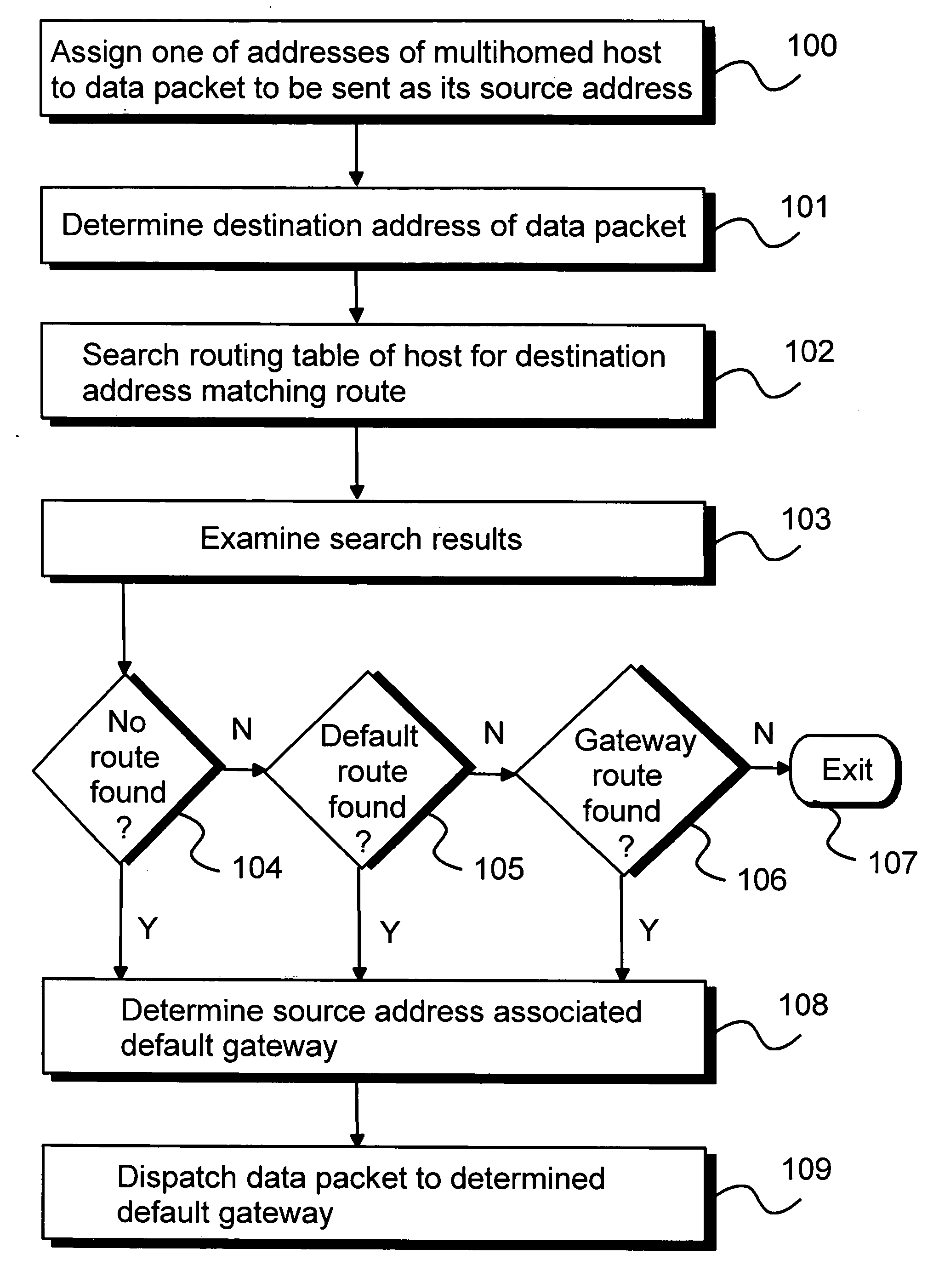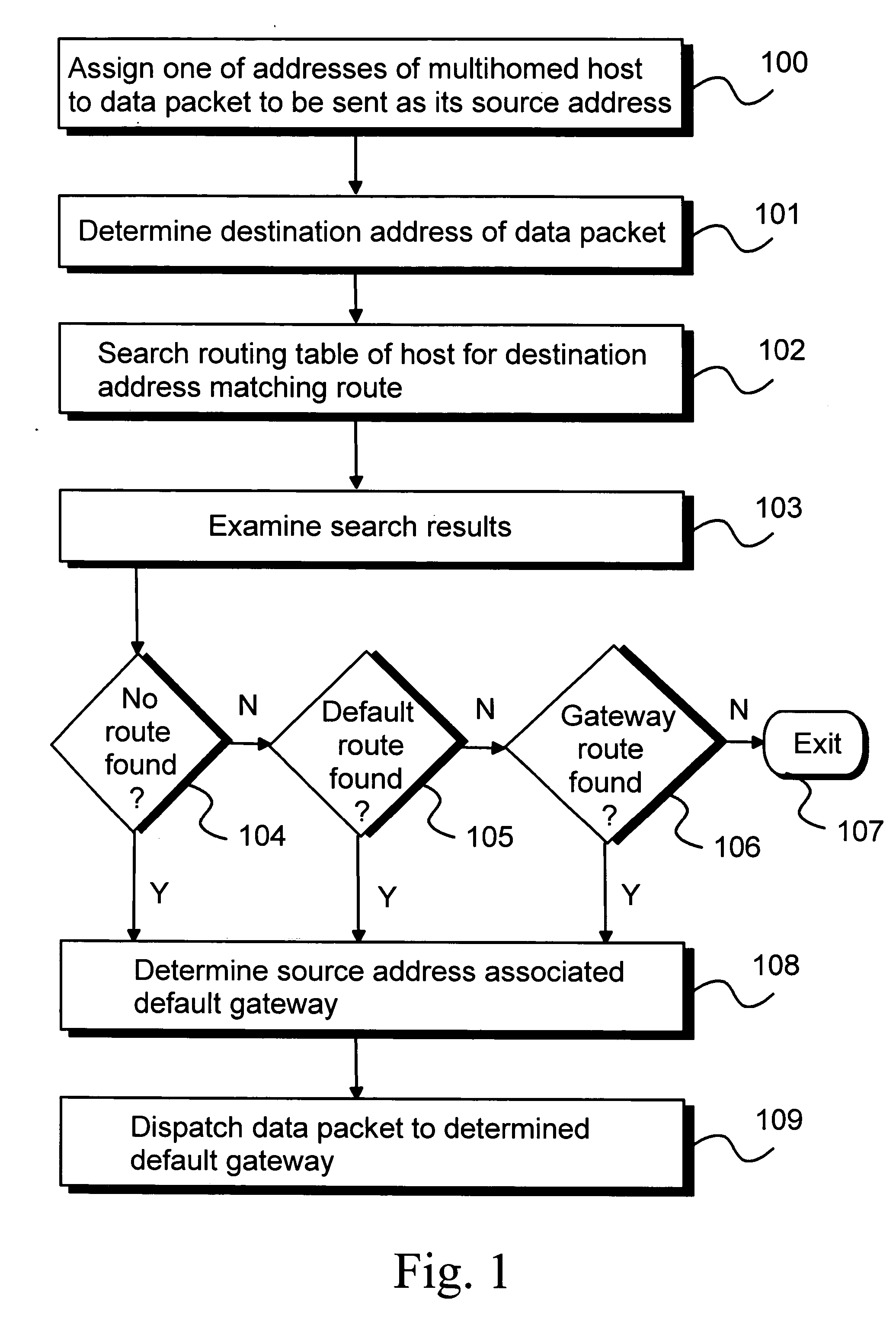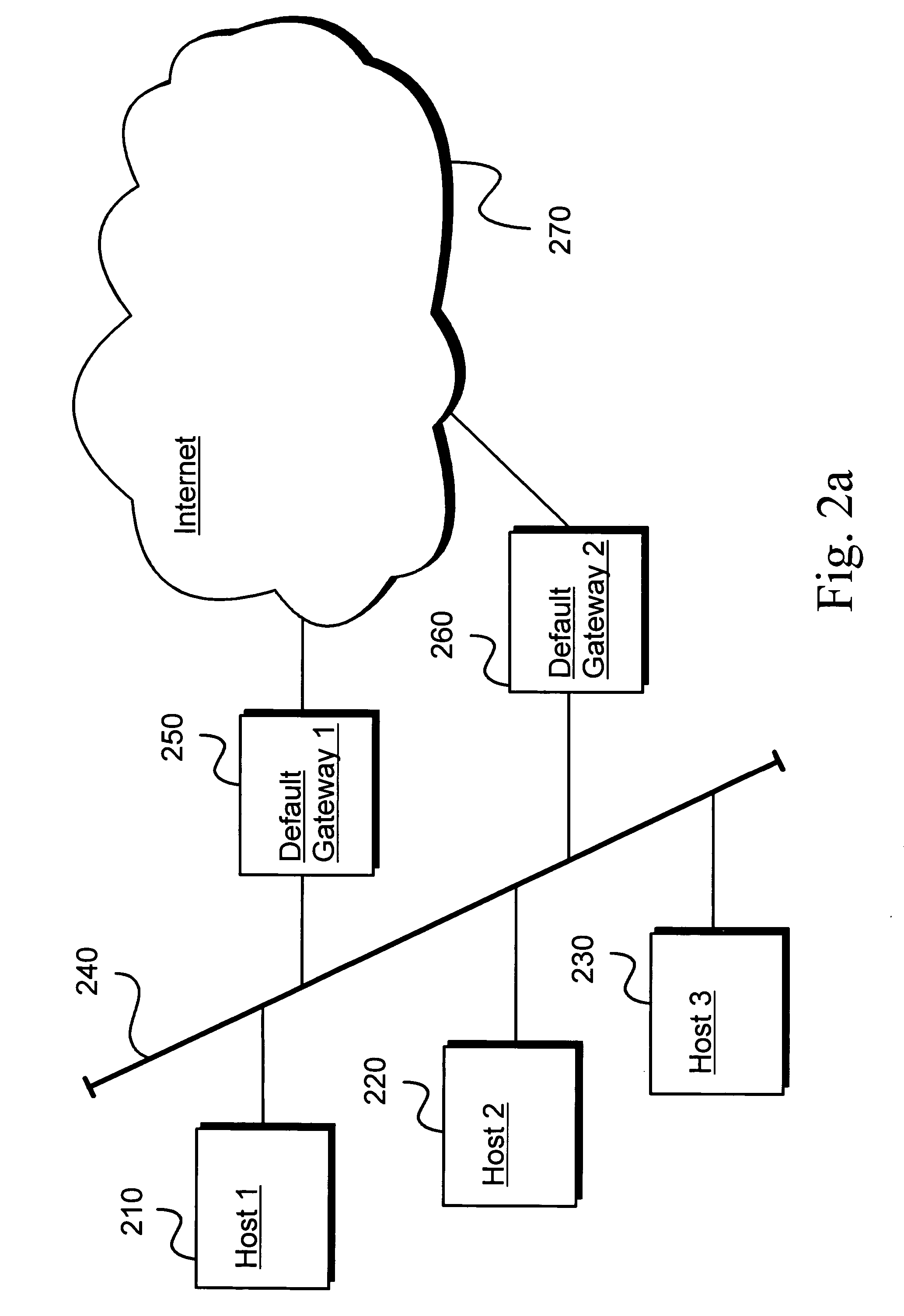Routing data packets from a multihomed host
a multi-homed host and data packet technology, applied in the field of telecoms, can solve the problems of confusion and loss of connectivity, single point of failure of default gateways, and still severe drawbacks of multi-homed, and achieve the effect of facilitating multi-homed host configuration and simplifying configuration simplicity and scalability
- Summary
- Abstract
- Description
- Claims
- Application Information
AI Technical Summary
Benefits of technology
Problems solved by technology
Method used
Image
Examples
Embodiment Construction
[0046] Reference will now be made in detail to the embodiments of the invention, examples of which are illustrated in the accompanying drawings.
[0047]FIG. 1 illustrates an embodiment of the method of the present invention relating to routing data packets from a multihomed host.
[0048] A source address is assigned to a data packet which is to be sent from the multihomed host, step 100. The multihomed host has at least two associated network addresses, and a default gateway is associated with each of the at least two associated network addresses. At least two of the network addresses of the multihomed host are associated with different default gateways. Furthermore, the assigned source address is one of the at least two associated network addresses.
[0049] At step 101, a destination address of the data packet is determined. Typically the determination of the destination address will be performed by searching for the destination address in the header of the data packet. Having determi...
PUM
 Login to View More
Login to View More Abstract
Description
Claims
Application Information
 Login to View More
Login to View More - R&D
- Intellectual Property
- Life Sciences
- Materials
- Tech Scout
- Unparalleled Data Quality
- Higher Quality Content
- 60% Fewer Hallucinations
Browse by: Latest US Patents, China's latest patents, Technical Efficacy Thesaurus, Application Domain, Technology Topic, Popular Technical Reports.
© 2025 PatSnap. All rights reserved.Legal|Privacy policy|Modern Slavery Act Transparency Statement|Sitemap|About US| Contact US: help@patsnap.com



